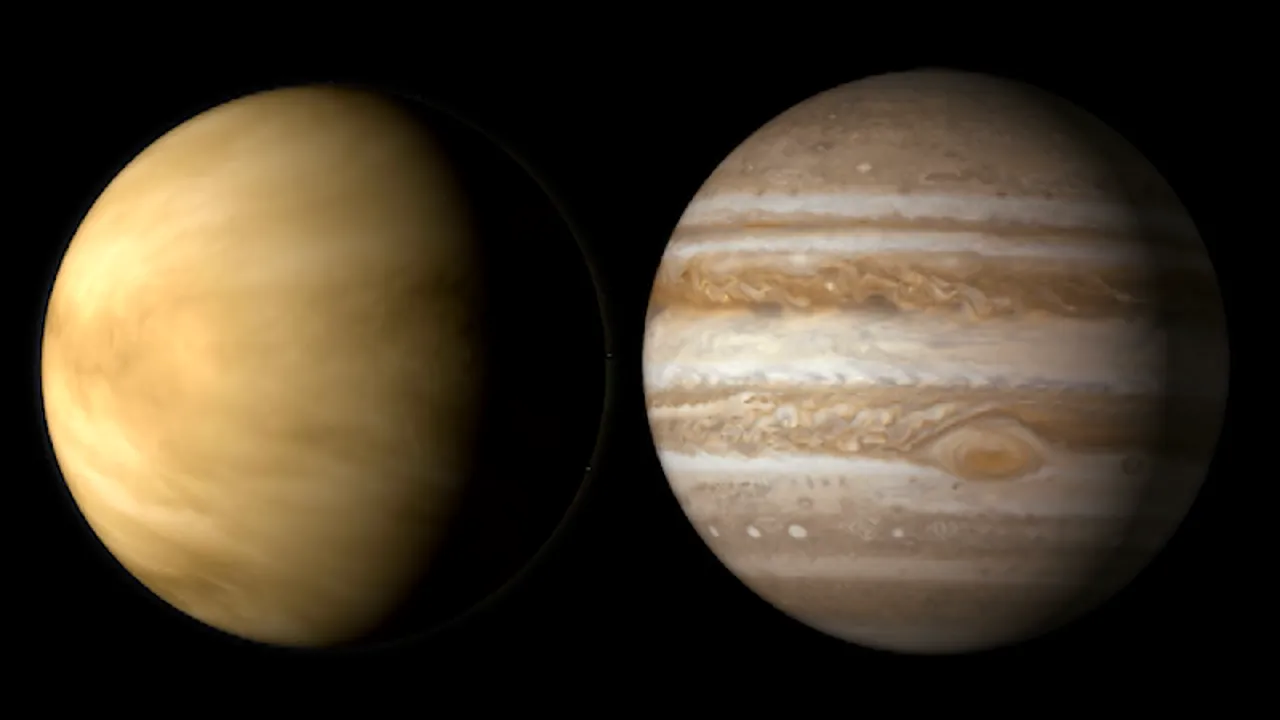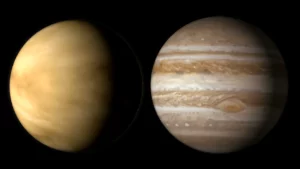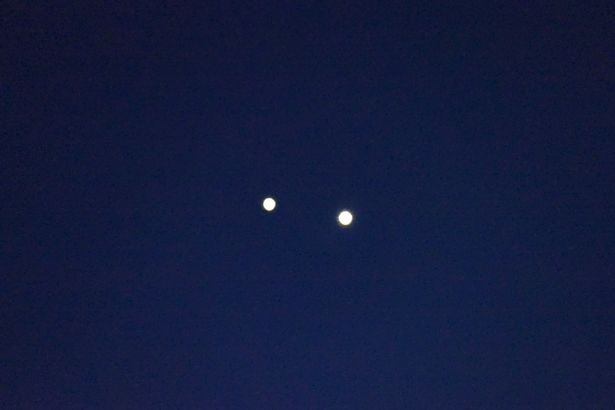In a meeting of solar system record-breakers, the largest and hottest planets, Venus and Jupiter will come into close proximity in the night sky. Venus and Jupiter will travel close to one another during their close approach, passing only 29.4 arcminutes, or almost half a degree, apart, according to In the Sky.
When the two planets are so close together, they will appear to “kiss” in the night sky. (At arm’s length, the area of the sky that your clenched fist covers is around 10 degrees.) The two planets will be around 23 degrees over the horizon to the west when the pairing is visible from New York City.
Following that, Venus and Jupiter will descend toward the horizon and set almost 2.5 hours after the sun. Both planets will be in the Pisces constellation during the close encounter. Venus will be brighter than Jupiter over Earth, with a magnitude of -4.0, compared to Jupiter’s magnitude of -2.1. Both magnitudes have a minus sign before them to indicate that they are unusually bright. They will also be visible with the bare eyes or through a pair of binoculars, according to In the Sky, and will be close enough to fit within the field of view of a telescope.

Venus is the solar system’s hottest planet and is located two planets from the sun. The reason Venus is hotter than Mercury, the planet nearest to the sun, is that Venus has a thick atmosphere that traps heat and results in a severe runaway greenhouse effect. Venus’s surface can reach temperatures of up to 900 degrees Fahrenheit (475 degrees Celsius), which is hot enough to melt lead. Volcanoes, some of which may still be active, are also scattered over the planet. By suffocating the atmosphere with greenhouse gases, volcanic activity, assuming it is ongoing, may be contributing to the rise in temperatures.

At an average temperature of about – 238 degrees Fahrenheit (minus 150 degrees Celsius), Jupiter has a much lower temperature than Venus since it is located much further from the sun, as it is the fifth planet from the sun. Jupiter can’t be matched in terms of size, but it loses temperature competition. Venus’s diameter is only 7,520 miles, compared to the huge gas giant’s estimated diameter of 88,846 miles (142,984 kilometers) (12,103 km). The gas giant has enough room to fit almost 1,400 Venuses.


